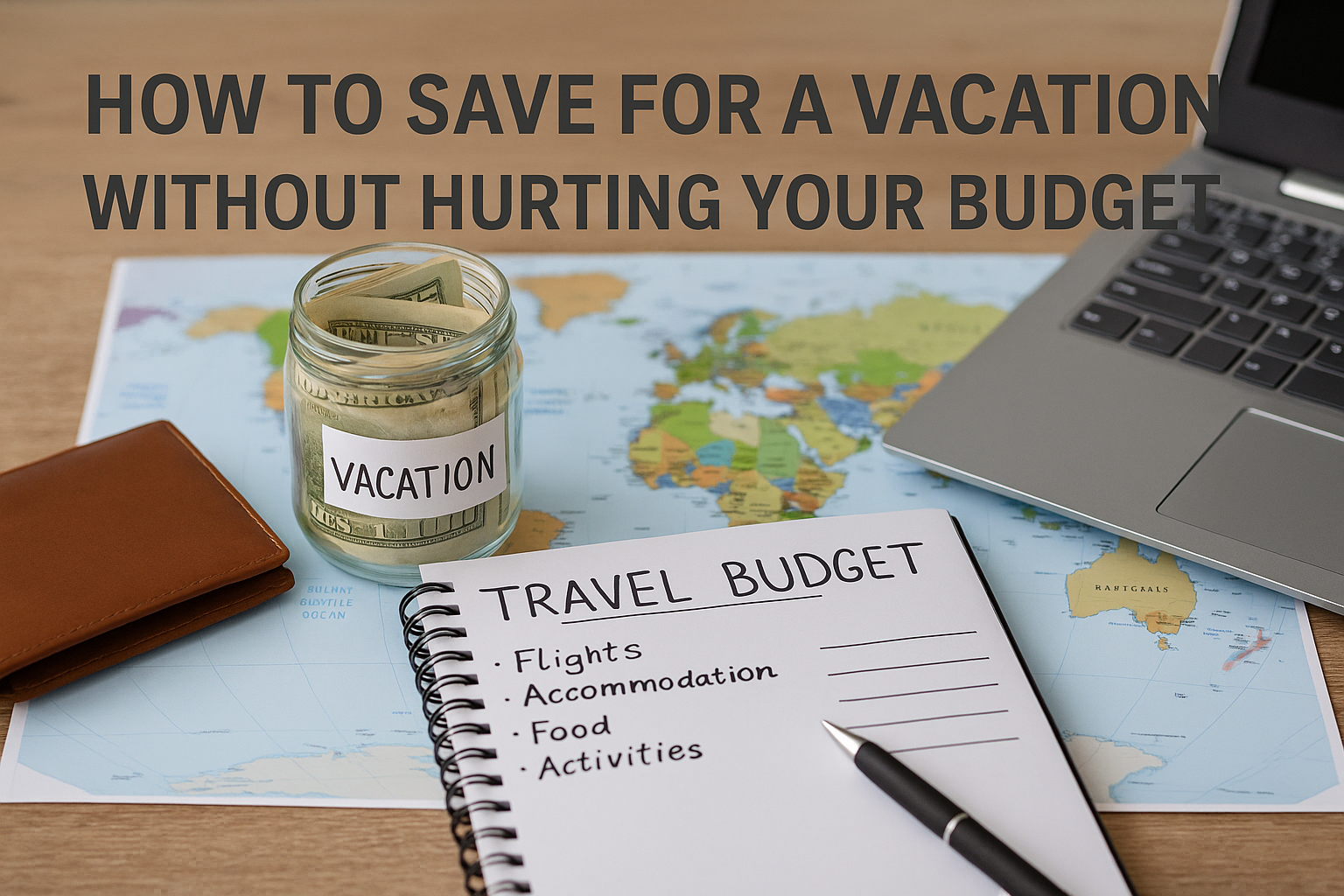Everyone deserves a break—but planning a vacation without wrecking your budget takes intention and discipline. The good news? With a smart strategy, you can enjoy time off without returning home to financial stress.
Here’s how to save for your next trip without putting your finances at risk.
Set a Clear Vacation Goal
Start with a clear plan: Where do you want to go? When? For how long?
Estimate the total cost of the trip, including:
- Transportation (flights, gas, car rental)
- Accommodation
- Food and drinks
- Activities and entrance fees
- Travel insurance
- Souvenirs and extras
Having a solid number gives you a clear savings goal to work toward.
Open a Separate Travel Savings Account
Keep your vacation fund separate from your regular spending account. This makes it easier to track progress and avoid the temptation to dip into the money for everyday expenses.
Look for a no-fee savings account that earns interest—even a little bit of extra income helps.
Automate Your Savings
Set up an automatic transfer into your vacation account every week or month. Even small amounts add up:
- $10 per week = $520 in one year
- $25 per week = $1,300 in one year
The key is consistency. Make it a regular habit, just like paying a bill.
Cut Back Temporarily on Non-Essentials
Saving for a trip doesn’t mean sacrificing fun forever—it just means making short-term changes.
Try cutting or reducing things like:
- Streaming services
- Takeout meals
- Impulse shopping
- Daily coffee shop runs
Redirect that money straight into your travel fund.
Use Cashback and Reward Programs
Many credit cards and shopping apps offer cashback or travel points. If you use them wisely (and pay your balance in full), you can reduce travel costs or even earn free flights and hotel nights.
Just make sure to avoid debt—this strategy only works if you don’t carry a balance.
Sell Unused Items
Declutter your home and boost your savings at the same time. Sell clothes, gadgets, books, or furniture you no longer need.
Use online marketplaces or host a garage sale, then put the earnings directly into your vacation fund.
Look for Deals Early
Booking in advance often leads to better prices. Use flight trackers and travel apps to monitor prices and get alerts on deals.
Also, consider traveling during off-peak seasons when prices are lower and destinations are less crowded.
Choose Budget-Friendly Destinations
Your dream vacation doesn’t have to be expensive. There are many beautiful and exciting places that are also budget-friendly.
Look for destinations where:
- Your money goes further
- Activities are free or low-cost
- You can stay with friends or family
- Local transportation is affordable
Sometimes, staying closer to home still gives you that vacation feeling—without the high costs.
Set a Daily Spending Limit for Your Trip
Once you’ve saved enough and start traveling, don’t forget to stay on budget while you’re away. Set a daily spending limit and track your expenses as you go.
This helps prevent overspending and ensures you return home with no financial regrets.
Celebrate the Process
Saving for a vacation is an achievement in itself. Celebrate small milestones—like reaching 25%, 50%, and 75% of your goal. It keeps you motivated and makes the eventual trip even more satisfying.
Travel Without the Stress
Vacations are meant to recharge you—not drain your bank account. By planning ahead, saving consistently, and making smart choices, you can enjoy every moment of your trip knowing it was fully paid for—before you even packed your bags.
Remember: smart saving leads to stress-free traveling.
